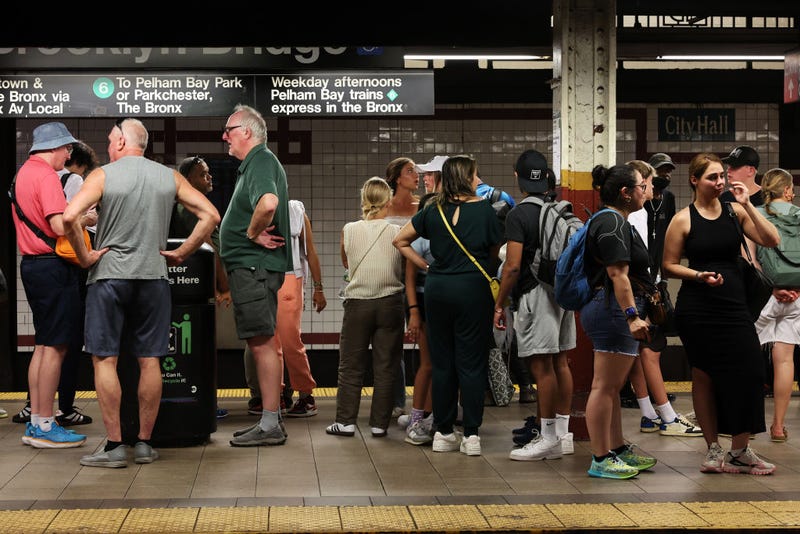
NEW YORK (BLOOMBERG) -- The New York City subway may be faster and cheaper than the alternatives for many commuters, but when it comes to air quality, it’s not necessarily healthier.
Levels of the dangerous fine-particle air pollution known as PM2.5 are “exceptionally high” on platforms and train cars, according to the authors of a new study on New York City’s subway air quality. And those New Yorkers with the highest exposure are disproportionately low-income, Black and Hispanic, the researchers find.
The paper adds to a body of research on subway pollution around the world. While underground rail systems reduce fossil fuel pollution and traffic congestion, they do also carry their own health risk.
The research, published Tuesday by the journal PLOS One, includes data on home-to-work commute patterns for 3.1 million workers across four boroughs of New York City (Manhattan, Brooklyn, Queens and the Bronx). Those who had longer subway journeys had a higher exposure to PM2.5, the fine particulate pollution that can travel deep into a person’s lungs and even their bloodstream.
Switching stations and longer waits for trains also increased exposure — the stations are more polluted than subway cars due to a lack of air purification.
Researchers found the average concentrations of PM2.5 on platforms and train cars were 10 and 7 times higher, respectively, than the 24-hour guideline set by the World Health Organization.
“The particulate concentration was quite high, a lot higher than one would want to imagine,” said Masoud Ghandehari, a professor in NYU Tandon’s Civil and Urban Engineering Department, who led the research team.
The researchers found that the rubbing of metal wheels and brakes on the rails releases metal particles, which appear in particular concentrations as the trains arrive at a station.
“We noticed that when a train arrives at the station, the concentration in the air shoots up, and about 15-20 seconds after it leaves, the concentration slowly comes down,” said Ghandehari. “This implies that it is the stuff that’s at the bottom of the tunnel that gets churned up and deteriorates the air.”
Although the whole system is polluted, minority and low-income communities have the highest exposure to the toxic air pollutants. Black and Hispanic workers face PM2.5 exposure levels 35% and 23% higher, respectively, than Asian and white workers, according to the study.
People living in upper Manhattan and the Bronx — two areas that offer fewer job opportunities and have a higher proportion of minority workers — have the highest levels of subway pollutant commuting exposure, the study finds. Researchers attribute the differences to lower-income workers’ reliance on the subway system, as well as their longer commute times to work.
“People who travel further are more vulnerable because they are exposed to the particulate matter for longer times,” said Ghandehari. “A person of higher economic background will also probably have a less adverse response to poor air quality because their baseline health is already better than a person in a low economic background.”
The researchers created an interactive map where NYC commuters can calculate their personal exposure to PM2.5 for any origin and destination within the city. But Ghandehari hopes the burden will not be on individuals to protect themselves.
“I think the responsibility is with the agency to insure that the environment is safe for people to use because the intent of the subway was to make things easier for people,” he said.
